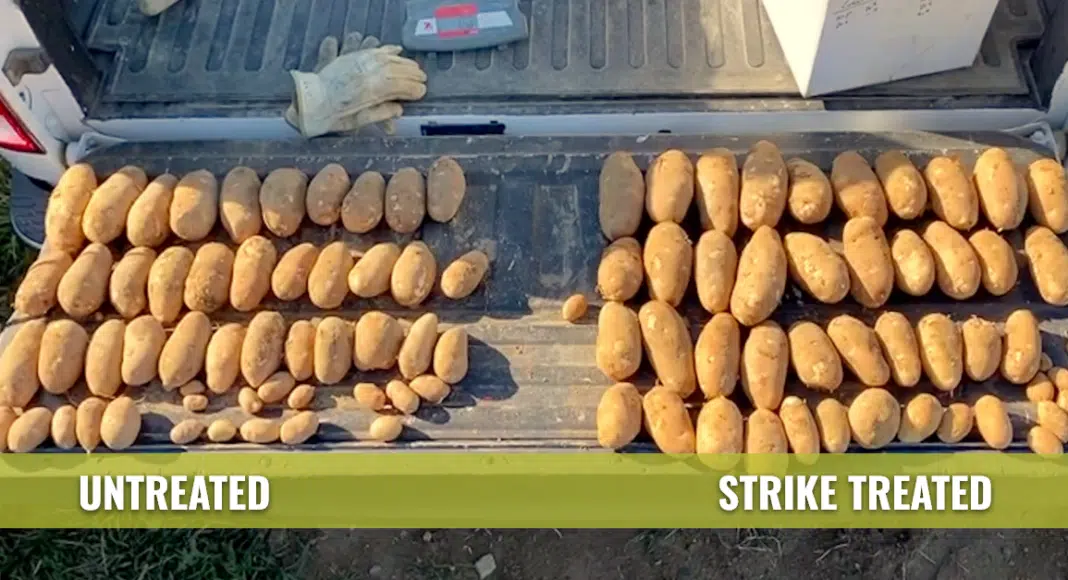An excerpt from our latest article published on SpudSmart.com tackles how to supply the demand for a potato processing plant by possibly farming fewer acres. Read on to learn more…
One of the biggest challenges in potato production is the sheer amount of land and resources required to meet processor demand. At one processing plant of which I am aware, it takes about 17,000 acres of potatoes to supply that processing plant for a year. I did some basic production math that shows that improving soil management practices — specifically through the thoughtful use of the soil fumigant Strike — would significantly boost yields, making it possible to achieve the same output on just 13,000 acres.
This reduction of 4,000 acres doesn’t just save land—it cuts the inputs needed across the board. Fewer acres mean less irrigation, less fertilizer, reduced fuel for equipment, and lower overall resource consumption.
Chloropicrin in-row soil fumigation over several trials increased potato yield an average of 100,000 pounds per 10 acres compared to untreated fields. To achieve the same yield without chloropicrin, farmers would need an additional 2.85 acres. Using 1,000 pounds of chloropicrin on 10 acres could save approximately 510 lb of nitrogen, 610 lb of potassium, 375 lb of phosphorus, 6.0 lb of chlorothalonil, 1.2 lb of metribuzin, 0.5 lb of azoxystrobin, 1.8 million gallons of water (irrigated crop), and 50 gallons of diesel (3,200 lb CO2 from diesel combustion) from being used on the unneeded 2.85 acres. When shown on the scale needed to supply a processing plant, these gains overwhelm most regenerative ag and sustainability goals, allowing stakeholders to reach a remarkable level of success.
To read the full story, visit: https://spudsmart.com/how-to-grow-more-with-less/
Want to talk to someone about your farm, email info@strikefumigants.com.
